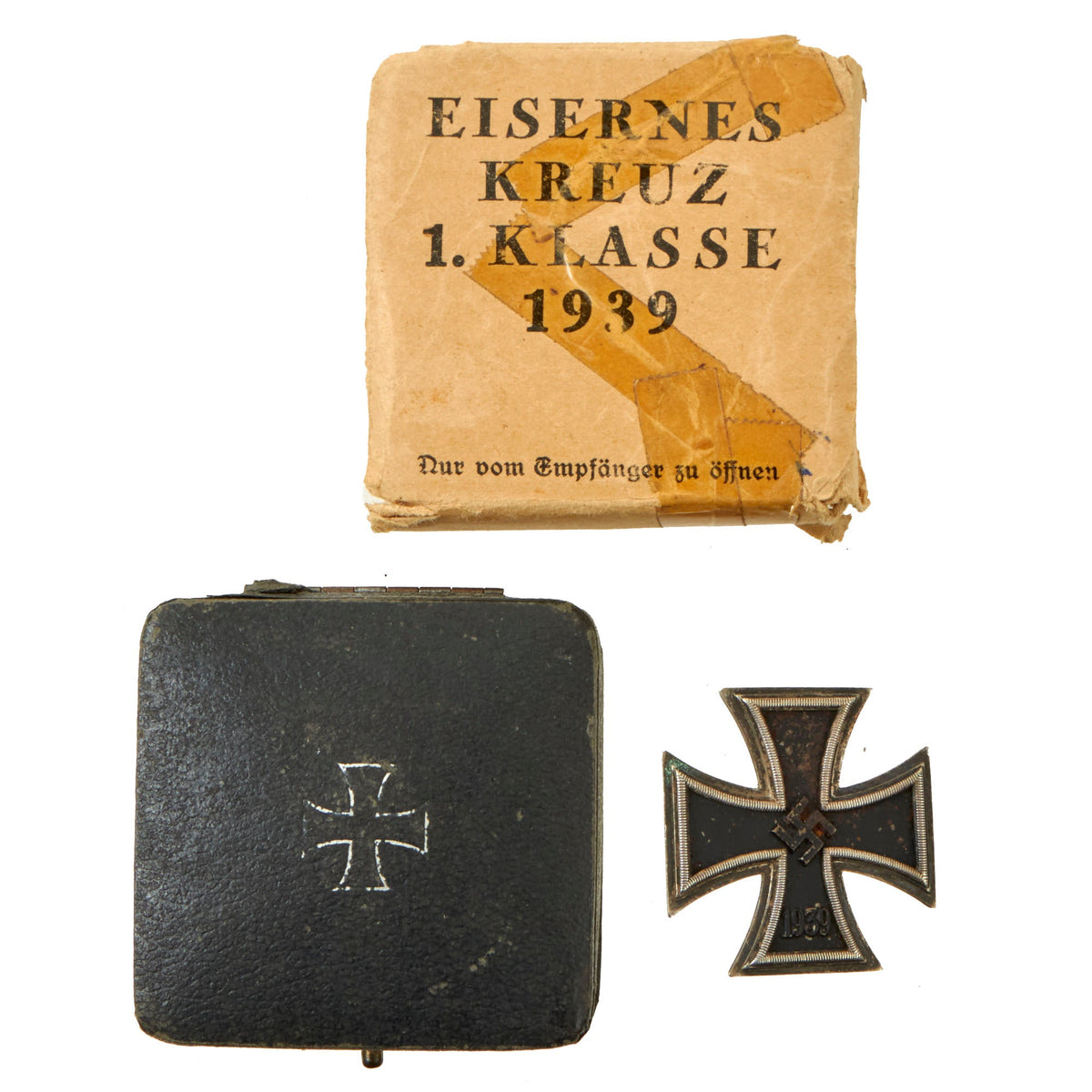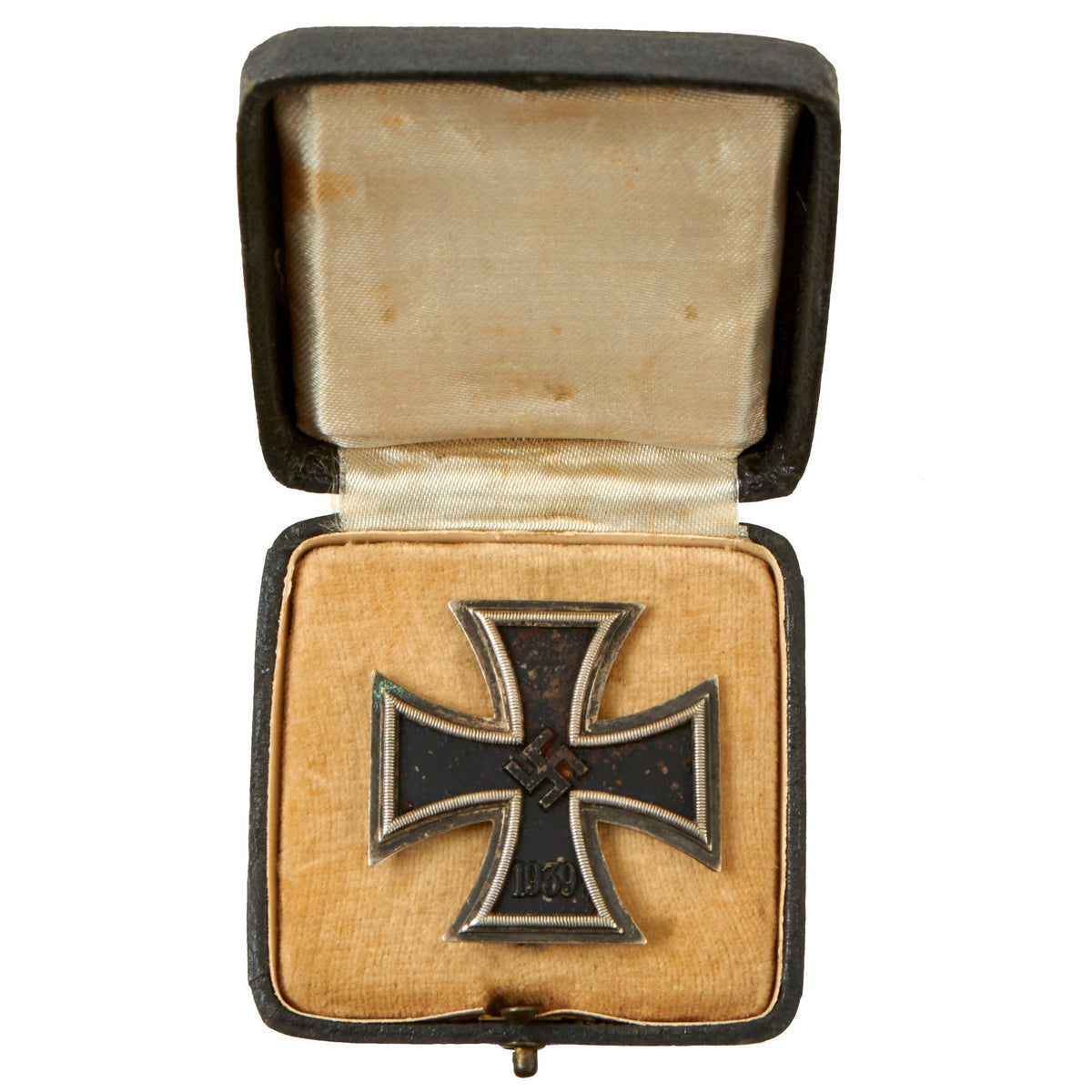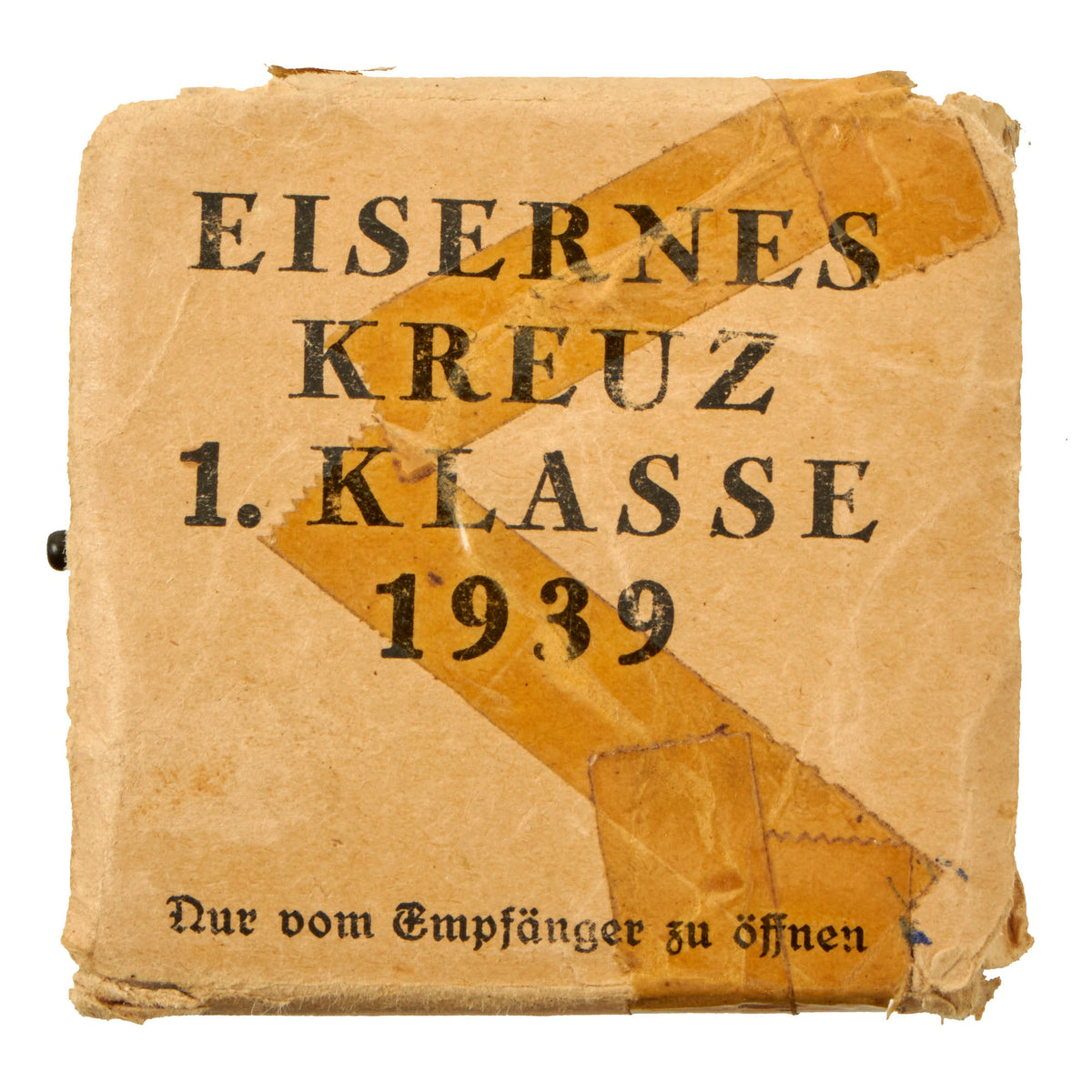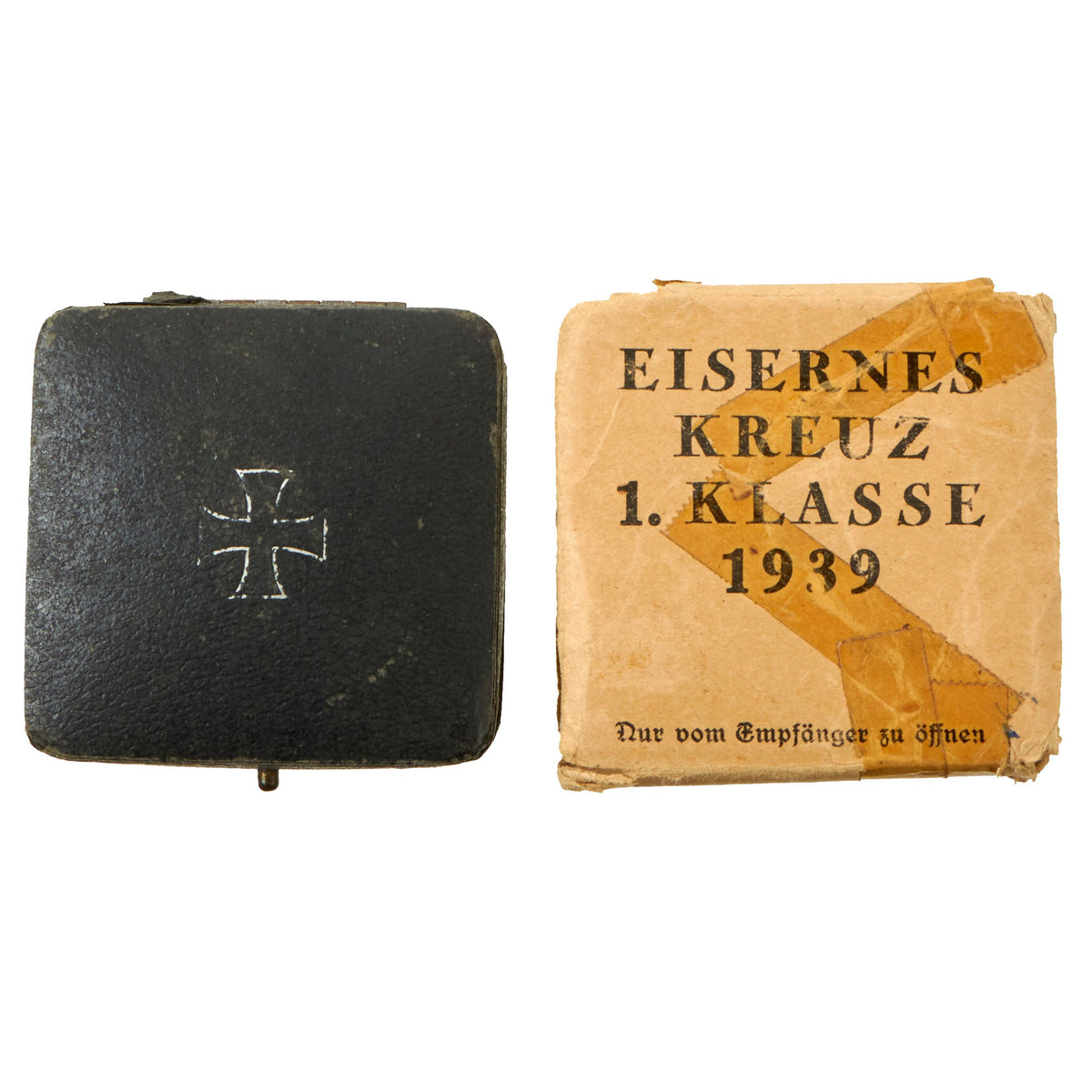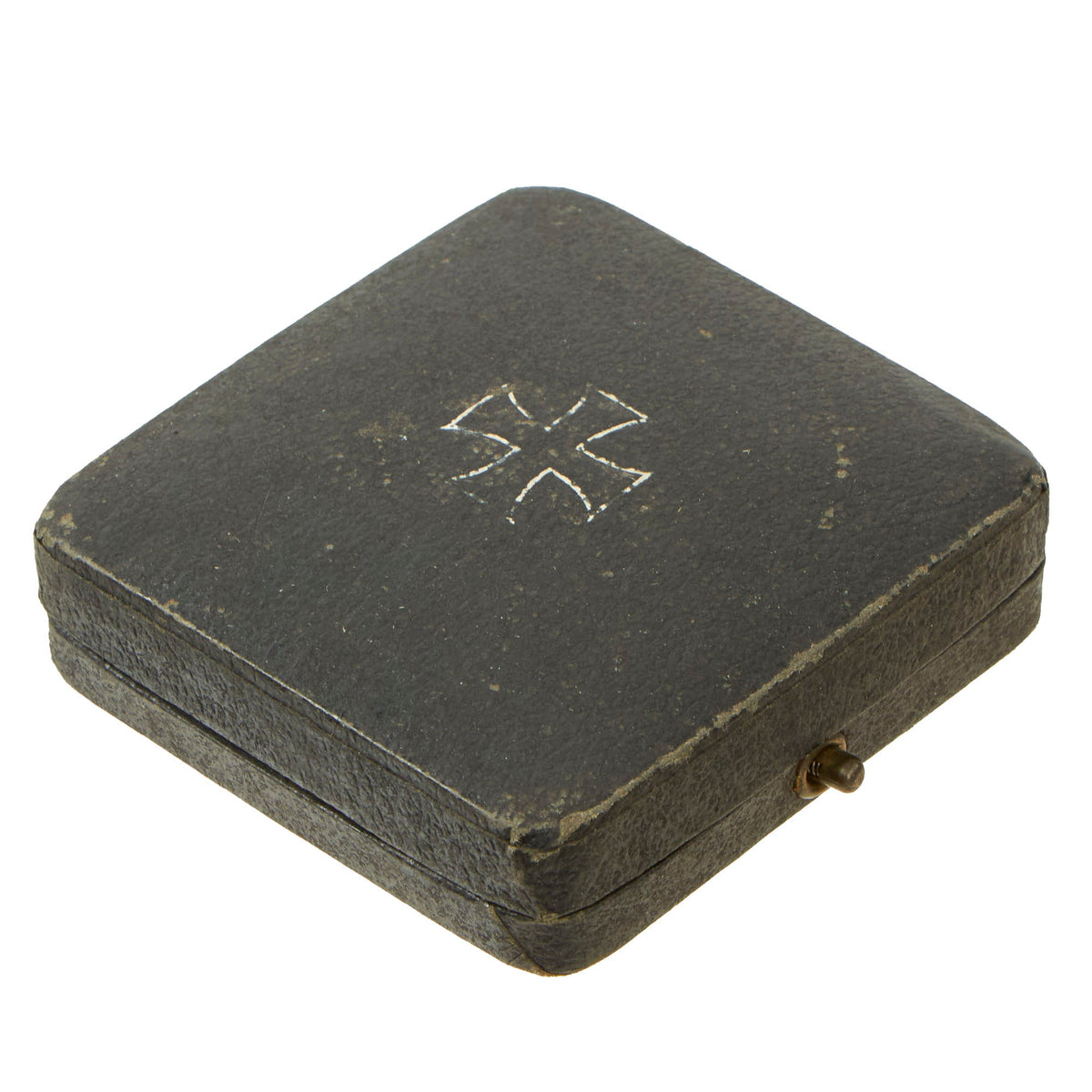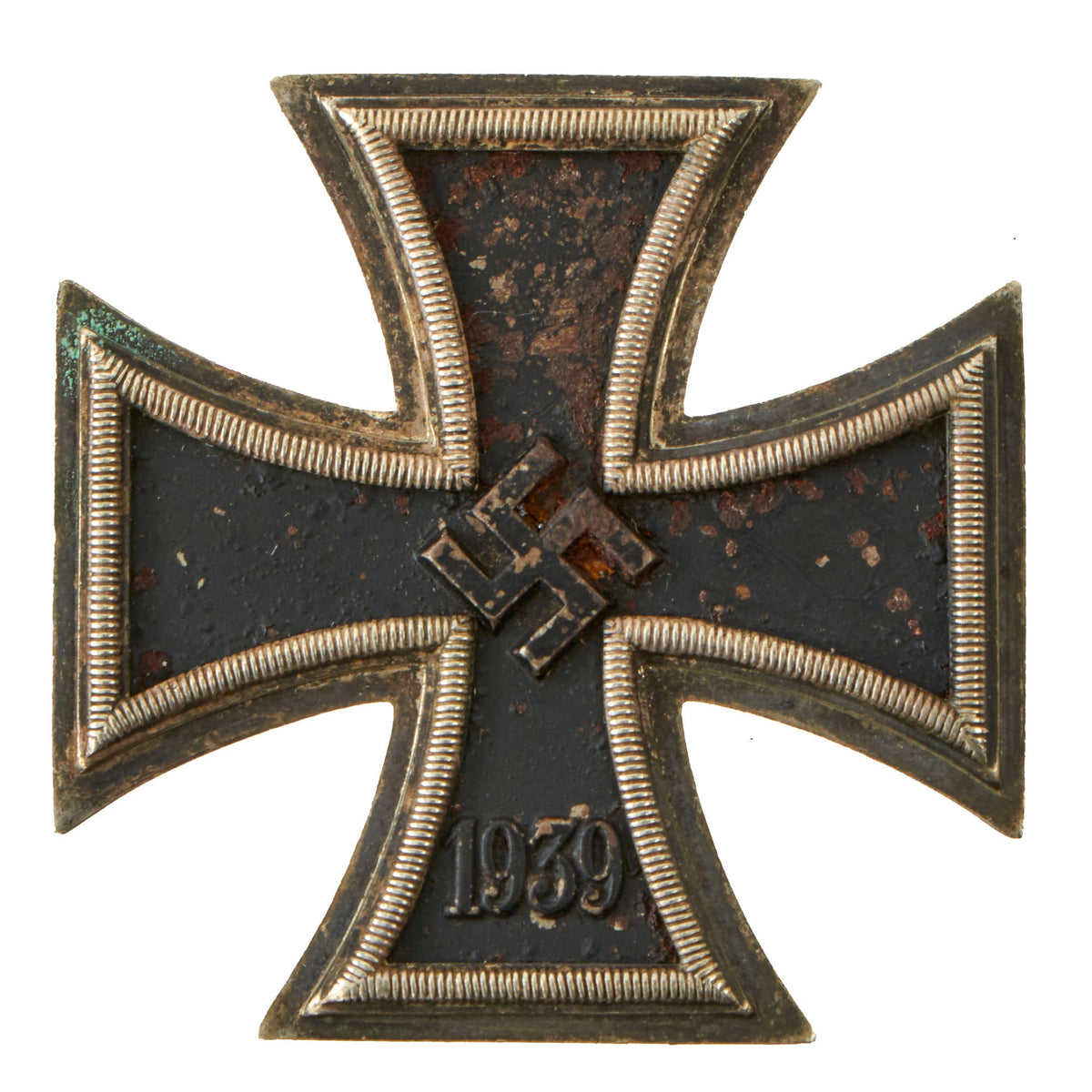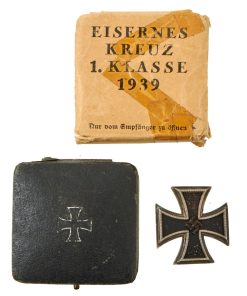Original German WWII Cased Iron Cross First Class 1939 by Gebrüder Godet & Co. with Original Box – EKI Original Items
$ 750,00 $ 225,00
Original Items: Only One Available. This is a lovely patinated example of a WWII Iron Cross First Class 1939, with a Magnetic core, flat design, and straight pin attachment. It comes complete in its original presentation case, and even has an extremely rare original cardboard box! We very rarely see these on the market, and cannot remember the last time that we had one.
The cross is maker marked with rare LDO number L/50 on the back under the pin catch, which represents Gebrüder Godet & Co. of Berlin. The The LDO, (Leistungs Gemeinschaft der Deutscher Ordenshersteller – Administration of German orders Manufacturers), was a self-governing organization formed in 1941 which regulated the manufacturing of all German awards. The firm Gebrüder Godet & Co. was a partially licensed in the organization, entry number 50.
The medal is in very good condition, with a lovely aged patina. The silver is retained quite well, with tarnish overall except on the raised areas and pin, showing that it is indeed genuine silver. The matte black paint on the central core cross is in good condition, showing some flaking at age, which have allowed some oxidation to occur. The paint on the raised Swas and 1939 date is still mostly present, with no signs of repainting. We do not get in example this nice often at all! The rear features a functional pin with a barrel hinge, showing some deformation to both the pin and catch.
The award comes complete in its original presentation case, with the Iron Cross emblem on the lid, and a functional catch on the front. The interior velvet and satin lining is very well retained, with minimal wear, though there definitely is some age toning. There is even the faint imprint of the award on the top satin. The black leatherette exterior is also very nice, with moderate wear and a functional hinge, though the hinge covering has worn away. There is also light oxidation to the fittings.
The original box is definitely in worn condition, with taped repairs, however it still bears clear text on the top identifying the award:
EISERNES
KREUZ
1. KLASSE
1939
Nur vom Empfänger zu öffnen
The lowest line translates to “Only to be opened by the recipient”, which is seen on many award boxes.
The basic design of the WWII crosses is a central Tatzenkreuz (cross pattée) struck from iron and mounted in a silver frame which has a raised crenulated decorative border. The obverse of the cross bears the date 1939 under a “mobile” swas. Second class crosses would have a ring at the top where a ring was attached, and had more markings on the back. The first class award, however, was meant to attach directly to the front of the uniform.
Please note the edge seam for authentication, which is not present on reproductions. Iron crosses were commonly constructed from an iron core sandwiched in a surrounding two part silver frame, normally the seam of these two silver parts is visible around the edge of the cross as is seen on this fine example.
A great cased and boxed example by a desirable maker, ready to add to your collection!
There is no more iconic German military award than the Iron Cross. The long history of this order began during the Napoleonic Wars. King Friedrich Wilhelm III of Prussia instituted the “Eisernes Kreuz” (Iron Cross) in March of 1813. The award criteria changed somewhat with time, but generally speaking, Iron Crosses could be awarded for individual acts of bravery, or for leadership achievements on the battlefield. The design was created by a Karl Friedrich Schinkel, his choice of the black cross with silver outline was derived from the heraldic emblem of the Teutonic Knights.
There were a number of different type and grades of Iron Cross awards throughout its long history, but the basic details of the most widely awarded grades: The Iron Cross 1st Class and Iron Cross 2nd Class- remained the same. The first class award was a breast badge, with fittings on the reverse to allow it to be worn on the uniform. These fittings varied widely over time and from maker to maker, and could be a simple in and catch, a screw post and retaining disc, or more elaborate setups. The second class award was suspended from a ribbon, originally in the Prussian colors of black and white, later in the Reich colors of black, red and white.
On the original versions of these crosses, in 1813, the front of the iron core of each grade was bare, and only the second class award had ornamentation: a crown over the initials “FW” representing the King, a sprig of oak leaves, and the date 1813. The core was redesigned in 1870, when the cross was re-instituted during the Franco-Prussian War. The reverse ornamentation on the Iron Cross 2nd Class remained the same, but the front of the core on both grades now bore another crown, a “W” representing Kaiser Wilhelm, and the date 1870. This pattern repeated again when the cross was reinstituted for WWI- everything stayed the same, only the date 1870 was replaced with 1914.
The final reinstitution of the cross came in 1939. For this version, the front of the core for both grades bore a swas and the date 1939. The oak leaves, crown and royal initials were removed from the reverse, with only the date 1813 remaining as a reminder of the legacy of this award. In WWII, hundreds of thousands of Iron Cross First Class awards were bestowed, and four and a half million Iron Cross Second Class awards. Iron Crosses were made by a large number of authorized manufacturers. Some variants of these awards were mass produced in huge numbers. Others were made in very limited quantities.
The Iron Cross was normally a military decoration only, though there were instances of it being awarded to civilians for performing military functions. Two examples of this were civilian test pilots Hanna Reitsch who was awarded the Iron Cross 2nd Class and 1st Class and Melitta Schenk Gräfin von Stauffenberg, who was awarded the Iron Cross 2nd Class, for their actions as pilots during World War II.
Fast Shipping with Professional Packaging
Thanks to our longstanding association with UPS FedEx DHL, and other major international carriers, we are able to provide a range of shipping options. Our warehouse staff is expertly trained and will wrap your products according to our exact and precise specifications. Prior to shipping, your goods will be thoroughly examined and securely secured. We ship to thousands clients each day across multiple countries. This shows how we're dedicated to be the largest retailer on the internet. Warehouses and distribution centres can be located throughout Europe as well as the USA.
Note: Orders with more than one item will be assigned a processing date depending on the item.
Before shipping before shipping, we'll conduct a thorough inspection of the items you have ordered. Today, the majority of orders will be delivered within 48 hours. The delivery time will be between 3-7 days.
Returns
The stock is dynamic and we cannot completely manage it because multiple stakeholders are involved, including our factory and warehouse. So the actual stock may alter at any time. It's possible that you may not receive your order once the order has been made.
Our policy is valid for a period of 30 days. If you don't receive the product within 30 days, we are not able to issue a refund or an exchange.
You can only return an item if it is unused and in the same state as the day you received it. You must have the item in its original packaging.
Related products
Uncategorized
Uncategorized
Uncategorized
Uncategorized
Uncategorized
Uncategorized
Uncategorized
Uncategorized
Uncategorized
Uncategorized
Uncategorized
Uncategorized
Armoured Fighting Vehicles of the World: AFVs of World War One (Hardcover Book) New Made Items
Uncategorized
Uncategorized
Uncategorized
Uncategorized
Armored Burgonet Helmet & Polearm from Scottish Castle Leith Hall Circa 1700 Original Items
Uncategorized
Uncategorized
Angolan Rebel 1970s era 60mm Inert Display Mortar from Angolan Civil War Original Items
Uncategorized
Australian WWII Owen MK1 Machine Carbine SMG Custom Fabricated Replica with Sling Original Items
